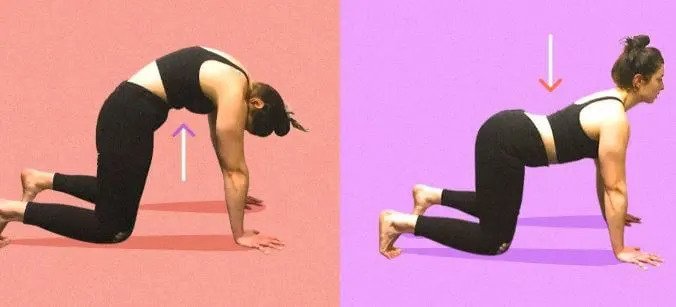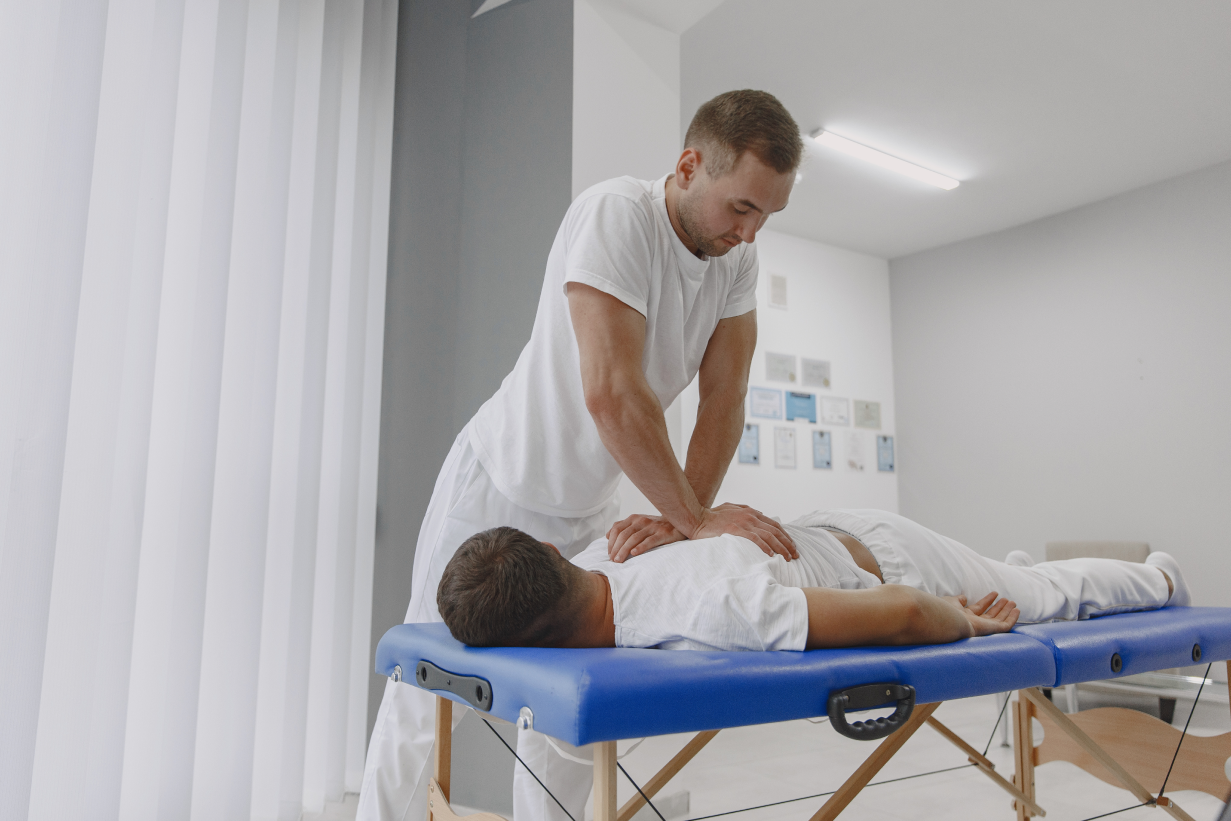
If you use your phone you could have Text neck
- April 3, 2022
- 3:53 pm
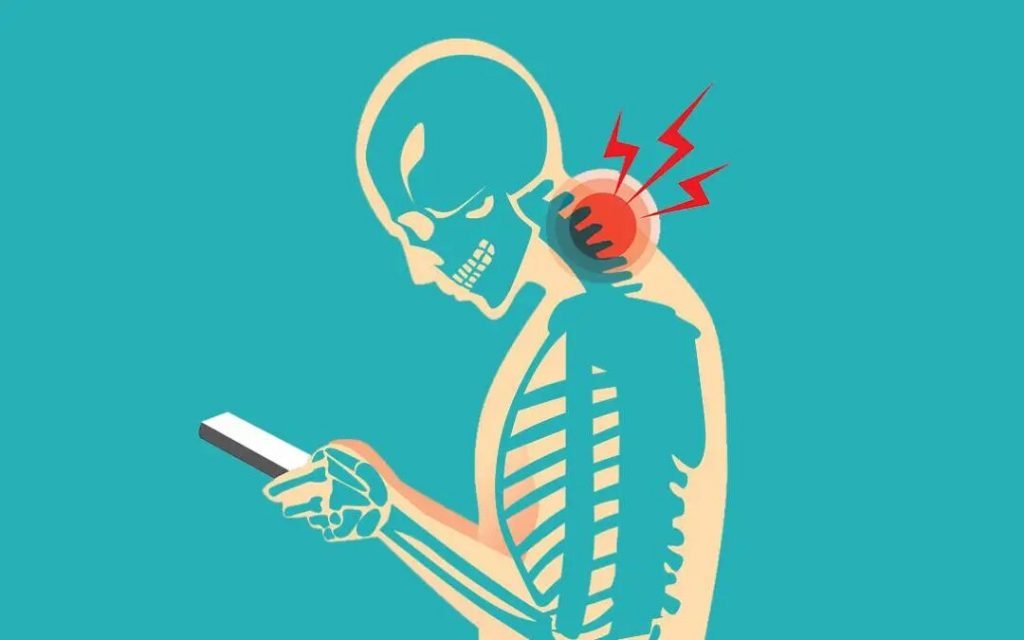
You may or may not have noticed, but most of us hunch over our smartphones for at LEAST two hours a day. This can effectively increase the weight of your head by up to 27kg, create poor posture habits, and if you text while walking, make you more prone to accidents. Currently, the number of mobile phone users around the world is expected to exceed 5 billion this year. The large surge of growth in the mobile market can be attributed to the reduced cost & availability of smartphones.
HEAD FORWARD POSTURE
“Text neck” has become a common problem with people typically sticking their neck forward and placing their head in front of their shoulders to use their phone for texting. This causes muscle tension, puts the user at risk of pinched nerves and can ultimately lead to a herniated disc. People that hold this position for long periods will find their posture degenerating and put the natural curve of their neck at risk of flattening or inverting over time.
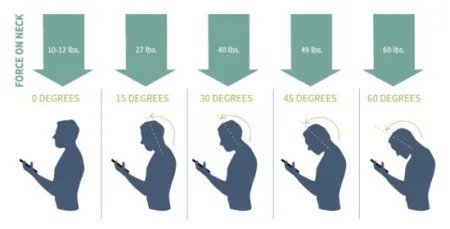
When your neck is at an angle of 15 degrees the weight of your head effectively increases to 12kg adding unnecessary strain to your neck. When the angle increases to 30 degrees the weight increases to 18kg, while a 45 degree angle adds up to 22kg. A 60 degree angle results in the head weighing the equivalent of 27kg, which is similar to carrying around an 8-year-old child.
EXERCISES
Try these exercises every night 1-3 times a day to help alleviate that text neck pain.
1. Exaggerated Head Nods: The exaggerated nod counterbalances the downward/forward head position by pulling your shoulders down and back, and increasing neck mobility
- Start by sitting at your desk or standing comfortably with your shoulders relaxed. With your mouth closed — teeth touching but not clenching — look up to the ceiling.
- Pause here and let your jaw relax and open your mouth. Now see if you can bring your head further back an inch or two (typically you can).
- Keep your head still here and bring your lower jaw to your upper jaw, closing your mouth. You should feel a stretch in the front of your neck.
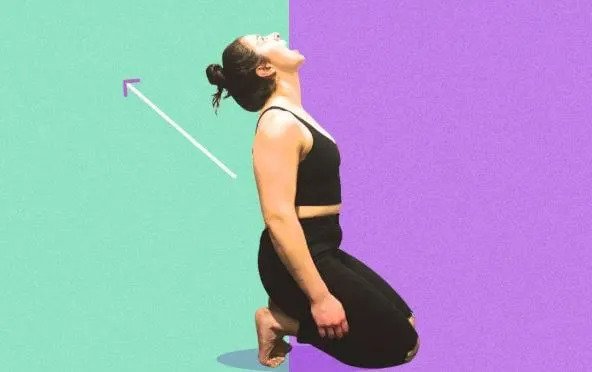
2.Downward-Facing Dog: This exercise helps open your chest and back.
- Begin on all fours. Tuck your toes and lift your hips high, reaching your hip bones towards the ceiling.
- Reach your heels back toward the mat, but don’t let them plank on the ground
- Drop your head so that your neck is long. As you stay here, make sure that your wrist creases stay parallel to the front edge of the mat.
- To alleviate the pressure on your wrists, press into the knuckles of your forefingers and thumbs.
- Breathe here for at least three deep breaths. Then release.
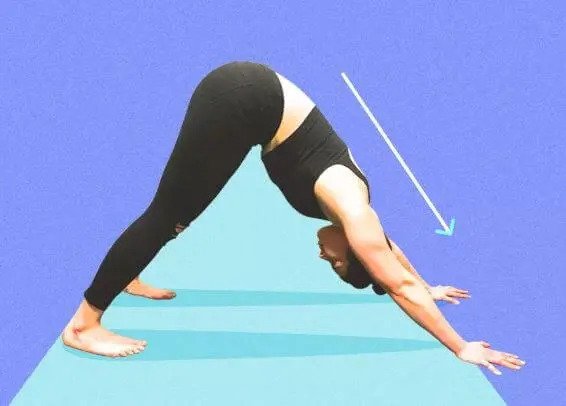
3. Cat Cow: Your core and pelvis should drive the Cat-Cow flow: As you inhale you create an anterior tilt to the pelvis so that your tailbone is facing the ceiling, and as you exhale you create a posterior tilt so that your tailbone is turned toward the ground. This movement sequence helps increase spinal awareness, which is a large part of less-than-perfect posture.
- Start on all fours with your shoulders stacked over your wrists, your hips stacked over your knees, and the tops of your feet pressed into the ground. Look down a few inches in front of your fingers and lengthen from your head down to your tailbone.
- To begin the ‘cat’ phase, use your abs to curl your spine toward the ceiling while tucking in your tailbone (making the shape of a Halloween cat) as you exhale. Lengthen your neck and allow your chin to reach down and in, toward your chest, so your ears come down by your biceps.
- To begin the ‘cow’ phase, swoop and scoop your pelvis so your belly drops down to the floor as you inhale. Broaden across your shoulder blades, drawing your shoulders away from your ears, and lift your chin and chest to gaze up toward the ceiling.
- Cycle through Cat-Cow a few times, keeping stress and pressure out of the head and neck.
